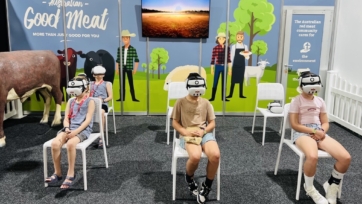Top 3 tips for creating a successful incursion or excursion program
Top 3 tips for creating a successful incursion or excursion program
On Tuesday, February 25th 2020, the Kimberlin Education Team had the pleasure of hosting our first event for 2020. The theme of the event focused around Incursions and Excursions and examined the key elements which make up a successful incursion or excursion program. This theme was explored in a multitude of ways, including through a keynote presentation from Kimberlin Education’s Education Manager Courtney Burgess, and two fabulous guest presentations delivered by Musica Viva’s Mary Scicchitano, and Yvette Pratt from the Botanic Gardens and Centennial Parklands. We were also delighted to be joined by our Education Manager Katey Street, Life Education’s Terese Hooper and Iman Mansour from Ernst & Young, who sat on our expert panel with moderator Lisa Cocks, Senior Education Manager at Kimberlin Education, and shared their ideas, knowledge and expertise with the audience.
As we explored the world of incursions and excursions, we were able to learn more about the benefits of and barriers to incursions and excursions, the planning process that teachers work through, and the main factors that determine teacher decision making around incursions and excursions.
So what are our top 3 tips for creating a successful incursion or excursion program?
1. Find a space in the marketplace
The incursion and excursion marketplace in Australia is a competitive place, with a wide range of quality programs on offer to teachers. So how can you make your program stand out? Yvette Pratt, National Education Manager at Botanic Gardens and Centennial Parklands shared one of her previous experiences while facilitating the program at the Australian National Botanic Gardens in Canberra in finding a space in the marketplace that you can ‘own’. The Canberra excursion is a staple learning experience for students in Years 5 and 6 and includes visits to places such as Parliament House, the War Memorial, and more. All of these excursions were only available during the day, so the Australian National Botanic Gardens opened themselves up for twilight tours. By finding this space in the market, the excursion was established as a leader in the field. Today, the twilight tour is still the most popular school excursion booked at the Australian National Botanic Gardens. This is a testament to the importance of identifying a gap in the marketplace and establishing yourself in that space.
2. Be flexible
Another key tip is to remain flexible with your offering. The Australian schooling sector moves at an incredibly fast pace and it is essential that you adapt your incursion or excursion to meet the changing needs of students and teachers. Mary Scicchitano, National Education Manager at Musica Viva shared a wonderful example of this during her guest presentation in which she described how changes in government policy directly impacted the incursion offerings at Musica Viva. Due to policy changes, Musica Viva has had to compete more in the marketplace than ever before. Despite this, Musica Viva reaches around 300,000 students each year due to their ability to be flexible and adapt to the current educational environment. New initiatives were introduced, such as providing discounts to schools with an ICSEA (Index of Community Socio-Educational Advantage) score of below 1000, and bringing on more touring artists to help them reach more schools. The success of Musica Viva is a fantastic example of the importance of being flexible in the way you deliver your incursion or excursion as adaptability is the key to a long-running successful program.
3. Support teachers
Our final tip is to support teachers as much as possible. The keynote presentation delivered by Kimberlin Education’s Education Manager, Courtney Burgess, highlighted the importance of helping teachers as they move through the planning process. This includes providing teachers with educational resources both prior to and post the incursion or excursion, preparing a risk assessment, developing an educational overview that highlights curriculum links, pre-visit discussion opportunities and possible extension activities, and finally sharing a handbook with teachers with useful information around facilities such as parking and required equipment. We know that teachers are more likely to return and make repeat annual bookings when they feel that their voices are heard and that they are valued by the provider, so supporting teachers in their incursion or excursion journey is essential for program success.
So now that you know what you can do to create and deliver a great incursion or excursion program, it’s time to get started! Get the ball rolling on your excursion or incursion with Kimberlin Education and get in contact by emailing us at hello@kimberlineducation.com.au.




